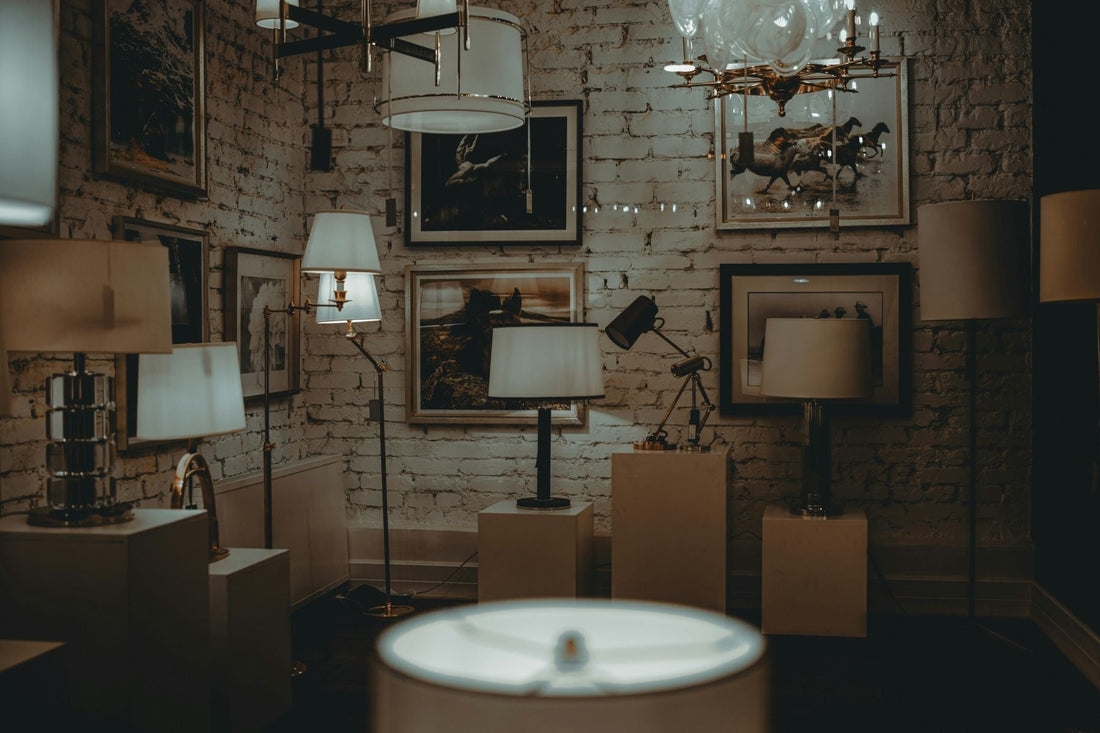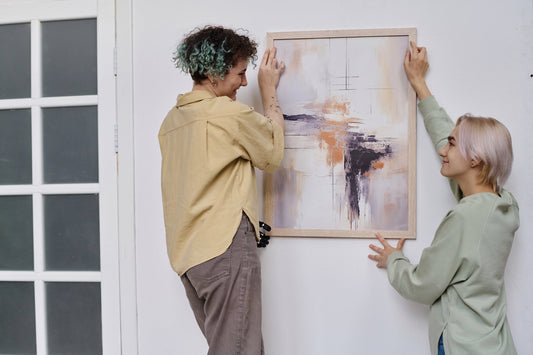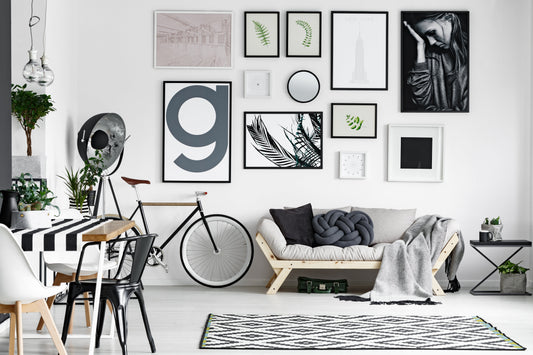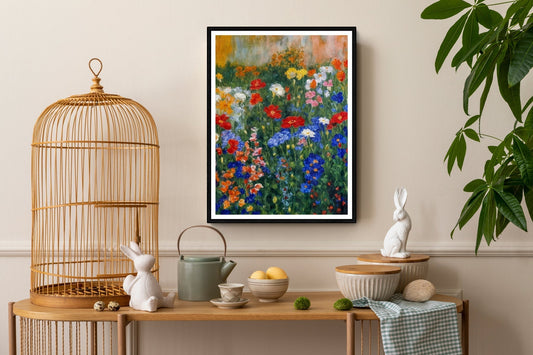
Understanding Art Psychology for Intentional Home Decor
Art has been a strong way of healing and self-expression for thousands of years. Art psychology has been in practice from cave walls painted by early humans to today’s museum displays, helping people work through their feelings at a safe mental distance.
Looking at or creating art can cut mental strain by almost 30%, boosting life satisfaction and mental health functioning.
Even a quick trip to a gallery or a quiet moment studying a painting can reduce the level of so-called stress hormones—or cortisol— by 15 to 20%, making you feel more relaxed.
This is why carefully choosing art for different parts of your home is important. It can change the way your environment affects your mind and emotions, reducing stress and improving your well-being.
Why Consider Art Psychology in Home Decor?
Incorporating art in your home does more than decorate. It also influences how you feel and respond within your living space. Experts say that experiencing art fires up reward areas in the brain.
In settings that use art therapy, people often gain better control over their emotions and feel much less anxious when interacting with artful pieces. Making art a part of everyday life can help reshape brain patterns to support a healthier mind in the long run.
So, picking art for each room can bring deep changes to mood and thought. How? The growing field of neuroaesthetics helps explain these effects by looking at how our brains react to beauty and art.
The Science of Neuroaesthetics
Neuroaesthetics looks at how our brain reacts to art and beauty. It maps the brain parts that give us pleasure. Like the orbitofrontal cortex and ventromedial prefrontal cortex, which light up when we enjoy art.
At the same time, the left dorsolateral prefrontal cortex (DLFPC) kicks in when we judge something as beautiful, showing how thinking and feeling work together.
Some basic rules explain how we process art in the brain. One is processing fluency, which says that art we can easily interpret triggers dopamine and good feelings. Examples of these are those that readily exhibit the golden ratio.
The same reward areas also react to sad or dark art, which occurs because of psychological distance. This allows us to feel without getting overwhelmed.
For home decoration, combining ambiguous and creativity-inspiring artwork with those that reduce stress can maximize a room’s emotional and cognitive benefits. This approach recognizes the unique function of each space, while considering science-based techniques in picking decor.
Tips for Choosing Intentional Wall Art for Each Space
Art carries cultural and mind-body power, with its physiological impact such as blood pressure reduction, as well as its psychological effect such as encouraging relaxation.
This shows how essential art is to our daily function and well-being. Want to intentionally use wall art for every part of your home? Below are some valuable tips:
Living Room
The living room is where people gather and connect. Having art that sparks empathy and brings out conversation can help deepen bonds. These are pieces that light up the temporoparietal junction, or the part of the brain that sees things from another’s view.
Research in art therapy shows gains in self-worth, clear thinking, and emotional skill, especially for those with dementia or mood challenges. It can be shaped to help with trauma, thinking, and social skills to further elevate well-being in shared spaces.
Interacting with art also cuts mental strain, no matter who you share the room with. Curating pieces with care can turn your living room into a space that supports both togetherness and individual calm.
Kitchen
Life in the kitchen moves fast, feeding both body and mind. Color and brain research shows red tones can spark hunger and raise energy, as it offers attentional advantages. This perfectly fits the energy needed to perform kitchen tasks.
Adding some abstract work can also wake up the motor parts of the brain, inspiring fresh ideas as you cook. In this setting, art pulls you in and keeps you active and engaged.
Dining Room
If the living area is a space your share with others, and the kitchen is where you whip up nourishing food for them, then the dining room is where both functions meet.
You want something that not only invokes connection and conversation but also riles up the appetite. Pieces with red hues can help with this, as it is also known to affect food and beverage intake.
The best part is that studies suggest that this color helps minimize snacks and soft drink consumption!
Home Office
The home office needs both focus and fresh ideas, so art selection matters. Figurative pieces can help you calm your mind as you work, while sleek and simple designs limit clutter in your view for enhanced focus.
If you seek increased impact on creativity levels, opt for bold abstract or surreal pieces. These engage the motor cortex and fire up the DLPFC, helping with problem-solving and creative thought.
In terms of color, blues are your best choice for alertness and performance, while greens offer a calming effect.
Bedroom
Your bedroom is a safe spot for rest and finding balance. Art with water scenes can cut heart rate variability by 12%, helping you relax and sleep better.
Using soft colors and quiet pictures can turn the room into a place that supports deep rest and inner calm. These images also guide your mind to steady your emotions and recover from daily strain.

People often forget that the bathroom has the potential to lift the spirit. Adding the right art here turns a simple washroom into a spot for mental refreshment and mood boost.
Placing calming nature wall art combined with relaxing essential oils or scented candles can help you wash away not only the dirt but also the stresses of the day.
The Takeaway
Using art in home design goes beyond looks. It works like a mind tool that affects feelings and thoughts in every room. Choosing art pieces with care gives you an easy, ever-present, and visually stunning way to support your well-being. With the right art, every space can turn into a functional space for your daily needs.



